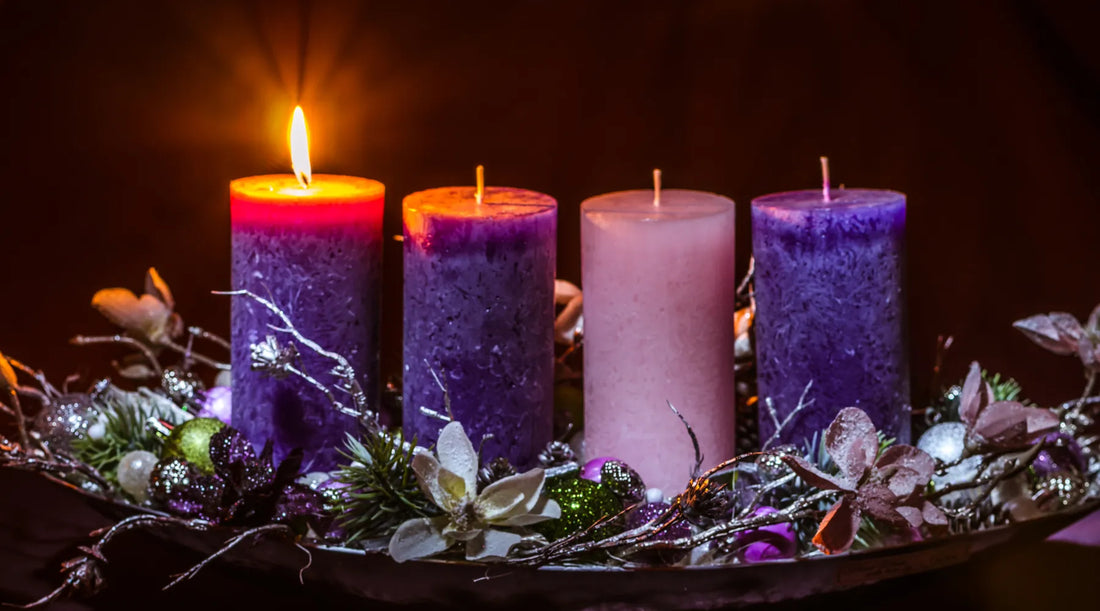
All the Advent Traditions and Their Purposes
Ascension TeamWhat is an Advent calendar?
An Advent calendar is a special calendar used to count down the days of Advent, the period leading up to Christmas. It typically starts on December 1st and runs through December 24th. These calendars often have a small door, window, or pocket that can be opened daily and there are treats, magnets, or other small items inside to mark the day.
What is the purpose of an Advent calendar?
The purpose of an Advent calendar is to provide a structured way to count down the days from December 1st to Christmas Eve. This can be particularly fun for children who are anticipating Christmas. Advent calendars build anticipation, encourage reflection, help unite and include all family members. Advent calendars also educate adults and children of the Christ child and the true meaning of Advent.
Advent calendars often include Bible verses, prayers, or religious messages that help individuals reflect on the spiritual significance of the Advent season and prepare their hearts for the celebration of Christ’s birth.
What is an Advent wreath?
An Advent wreath is a Christian tradition symbolizing the passage of the Advent season. It typically consists of a circular wreath made from evergreen branches, representing eternal life, and holds four candles—three purple and one pink.
Each candle represents one of the four Sundays leading up to Christmas, with a fifth "Christ candle" sometimes placed in the center, lit on Christmas Eve or Christmas Day. Each week, a new candle is lit, symbolizing hope, peace, joy, and love. The growing light reflects the approach of Jesus, the Light of the World, celebrated at Christmas.
What does the first candle of Advent represent?
On the first Sunday of Advent, the first candle on the Advent wreath, often called the "Prophet’s Candle" or the "Candle of Hope," is lit. This candle symbolizes the hope of the people of Israel who waited for the Messiah and the hope of Christians today for Christ’s return.
What does the second candle of Advent represent?
On the second Sunday of Advent, the second candle on the Advent wreath, often called the "Bethlehem Candle" or the "Candle of Peace," is lit. This candle symbolizes the peace that Christ brings to the world, fulfilling the prophecy of peace found in the Scriptures.
What does the third candle of Advent represent?
The third Sunday of Advent is traditionally known as Gaudete Sunday, a day of rejoicing. The word "Gaudete" means "rejoice" in Latin, reflecting the joyful anticipation of Christmas. The third candle is often called the "Shepard's Candle" or the "Joy Candle." On this day, the pink (or rose) candle on the Advent wreath is lit, symbolizing joy. You will also see that priests and deacons dress in rose-colored vestments.
What does the fourth candle of Advent represent?
On the fourth Sunday of Advent, the fourth candle on the Advent wreath, known as the "Angel’s Candle" or the "Candle of Love," is lit. This candle symbolizes the love that God has for humanity and the love that Christians are called to share with others. This is the final Sunday of Advent, just a few days before Christmas, and it focuses on the theme of love and the preparation for the birth of Jesus Christ.
What is a Nativity Scene?
A Nativity scene, also known as a manger scene, is a depiction of the birth of Jesus Christ, illustrating key figures from the biblical account of his birth. Typically, it includes figures of the Holy Family—Mary, Joseph, and the baby Jesus—as well as other important characters such as the shepherds, the Wise Men (Magi), angels, and animals present at the manger in Bethlehem.
Nativity scenes can be displayed in various forms, including statues, paintings, or dioramas, and are often set up during the Advent and Christmas seasons. They serve as a visual reminder of the humble beginnings of Jesus' life and the significance of his birth.